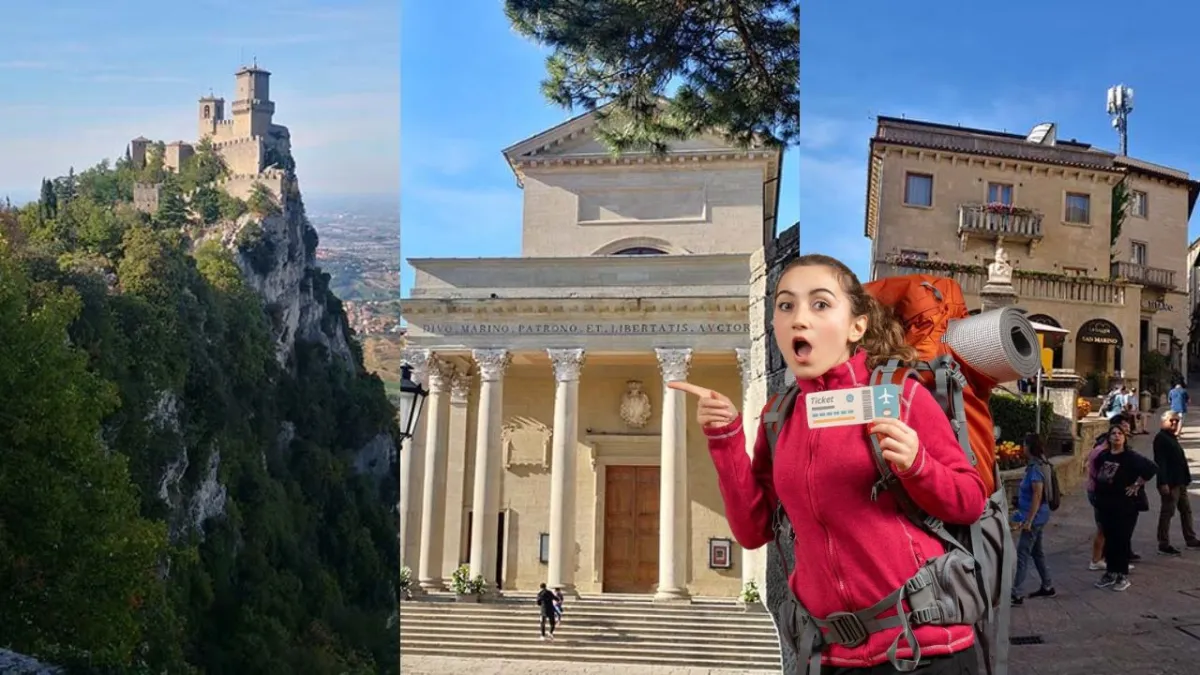
When thinking about the oldest countries in the world, nations like Egypt, China or Greece often come to mind. However, in the heart of Europa
There is one whose history dates back to time immemorial, long before Spain or France existed as political entities. There remains a small republic nestled in the Italian peninsula, which It holds the title of being the oldest republic in the world still in existence.
With an area of just 61 square kilometers and a population of around 34,000 inhabitants, It is a living testimony of resistance and historical continuity. Founded on September 3, 301 AD, by the Christian stonemason Marinus de Arbe, it has maintained its independence throughout the centuries, resisting invasions, wars and political changes that have transformed the European continent.
The story is fascinating not only because of its antiquity, but also because its ability to adapt and survive in a changing geopolitical environment. Over the centuries, it has managed to maintain its sovereignty through a combination of skillful diplomacy and strategic alliances. This small country has witnessed the fall of the Roman Empire, barbarian invasions, the Napoleonic Wars and two world wars, always emerging with its independence intact.
>>> Lea: The countries that create obstacles for Colombians to obtain a visa, even in Europe
The founding of the oldest country in the world: San Marino
San Marino, located on the Italian peninsula, was founded by Marinusa Christian stonemason fleeing religious persecution in the Roman Empire. According to legend, Marinus took refuge on Mount Titano, where established a small Christian community.
This community grew over time, and in the year 301, San Marino was officially founded as an independent republic. The founding date is significant, as it marks the beginning of one of the longest-lasting republics in history.
Tripadvisor
The independence of San Marino
Throughout its history, San Marino has faced numerous challenges to its independence. During the Middle Ages, the country was threatened by feudal lords and neighboring powers, but It managed to maintain its autonomy thanks to its strategic location and its ability to forge alliances. In the 15th century, it signed a treaty of friendship with the Pope, which allowed it to maintain its independence against the territorial ambitions of the Italian states.
San Marino in the Modern Age
In the modern age, San Marino continued to defend its independence against European powers. During the Napoleonic Wars, the country managed to avoid annexation by France thanks to the diplomacy of its leaders. In the 19th century, It became a refuge for Italian revolutionaries fighting for the unification of Italy. Despite external pressures, it managed to maintain its sovereignty and became a symbol of freedom and resistance.
The economy of San Marino
Despite its small size, San Marino has developed a diversified economy that includes tourism, banking and manufacturing. The country is known for its ceramics and textile industry, as well as its wine and spirits production. Tourism is a major source of income, with thousands of visitors coming each year to explore its landscapes and rich history.

Getby bus
The culture of San Marino
San Marino has a rich cultural heritage that reflects its long history. The country has numerous historical monuments, museums and festivals that celebrate its heritage. The architecture is a mix of medieval and Renaissance styles, with fortresses and towers offering stunning views of the surrounding landscape. The culture is also influenced by its proximity to Italy, which is reflected in its cuisine, language and traditions.
>>> You may be interested in: Do you know in which European country you are paid to travel and work with a Colombian passport? See it here
What to do in San Marino?
San Marino offers a variety of activities and places to visit. Among the main attractions are:
- San Marino Historic Center: A walk through its cobbled streets will take you through centuries of history.
- The Three Towers: Guaita, Cesta and Montale, located on Monte Titano, offer panoramic views and an immersion in medieval history.
- Public Palace: the town hall and seat of Government, an emblematic building with a rich history.
- Basilica of San Marino: a historic church that houses the relics of San Marino.
- Torture Museum: a site that offers insight into torture methods used in the Middle Ages.
- Borgo Maggiore: a picturesque neighborhood at the foot of Monte Titano, accessible by cable car, with local markets and shops
How much does it cost to go to San Marino from Colombia?
The cost of a trip to San Marino from Colombia can vary depending on several factors such as transportation, accommodation, and the activities you plan to do. On average, you can expect to spend between 50 and 150 euros per day (approximately 225,000 to 680,000 Colombian pesos), including food, transportation, and attraction tickets
Flights from Bogotá to San Marino usually involve several stopovers and can cost between 450 and 1,400 euros (around 2,100,000 to 6,300,000 Colombian pesos), depending on the season and the airline.
Furthermore, it is important to consider the cost of internal transportation in Italy, since San Marino does not have its own airport and is mainly accessed from nearby Italian cities such as Bologna or Florence.
San Marino in the 21st century
Today, San Marino remains an example of stability and continuity in an ever-changing world. The country has managed to maintain its independence and cultural identity over the centuries, and continues to prosper as a democratic republic. It is a member of several international organizations, including the United Nations and the Council of Europe, and continues to play an active role in the international community.
Source: https://www.noticiascaracol.com/mundo/ni-espana-ni-francia-el-pais-mas-antiguo-del-mundo-se-encuentra-en-europa-so35


